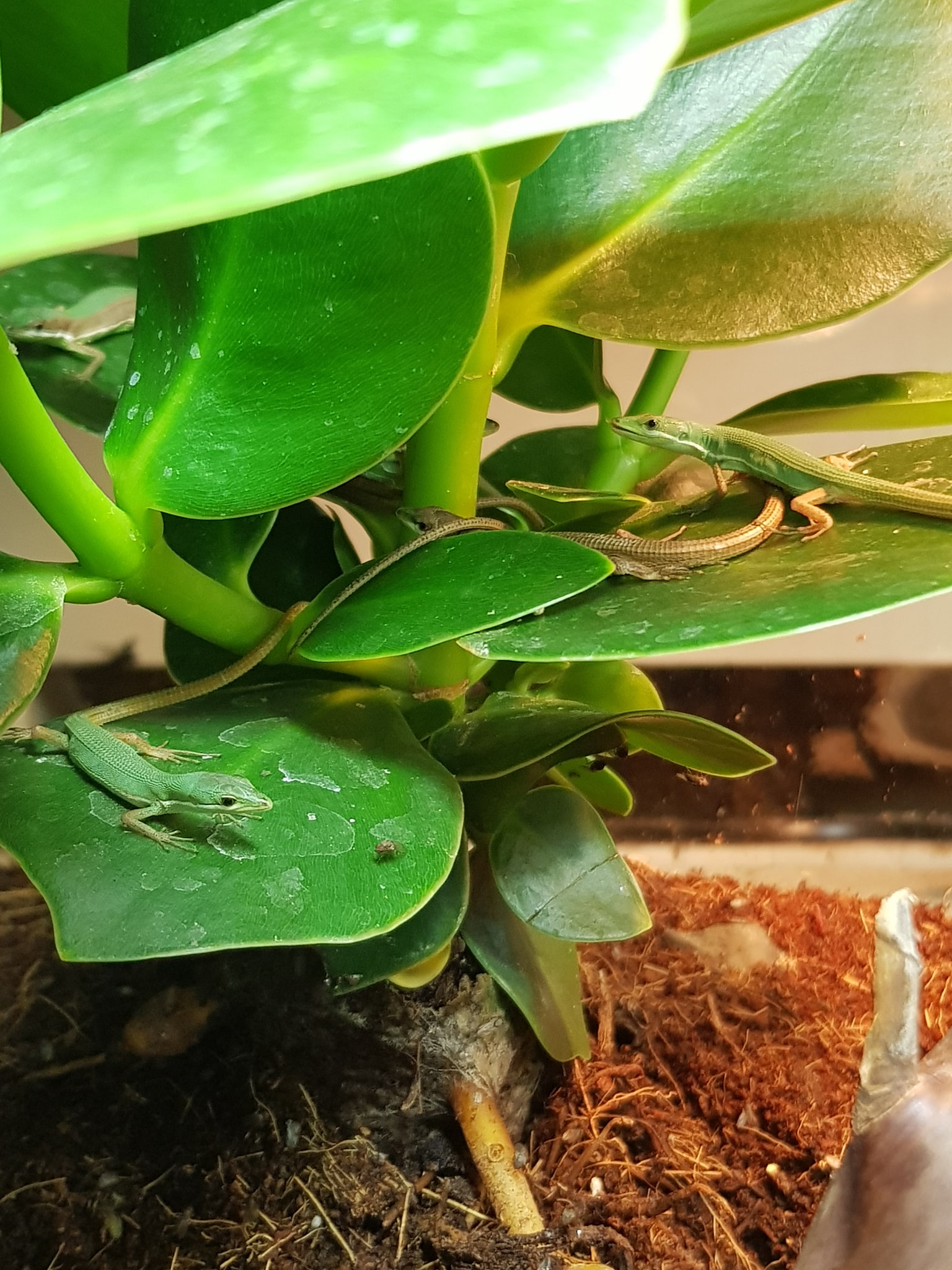How do you create this?
In recent years it has become more and more popular to make your terrarium bioactive.
It is a way of housing, which is different from setting up the standard terrarium.
Naturally setting up a terrarium has been around for some time. But with a bioactive
terrarium, comes to see a little more.
What do we mean by bioactive?
When making your terrarium bioactive, you are actually trying to create natural processes. It becomes, as it were, a small ecological system. Think of a natural habitat containing an organic way of processing waste and food.
Take, for example, springtails (invertebrates). These are now often used as food animals.
But did you know that these animals are very good at processing fungi and residual waste?
Why choose bioactive?
- Hygiene and convenience.
- Natural habitat for your animal.
- Stimulation of natural behavior.
- Imitating a piece of nature.
- Biological waste processing.
There doesn't seem to be much difference between a naturally decorated terrarium and a bioactive terrarium. The main difference is the presence of natural processes. You do not have these processes in a naturally furnished terrarium.
How should you start?
Before you start, familiarize yourself with the natural needs and origin of your reptile.
Then you choose an enclosure (preferably it is larger than the indicated sizes, because a deeper layer of substrate is placed in the terrarium).
Also check whether the accommodation has enough ventilation, this is good for the air quality but also prevents mold and bacteria.
substrate layer:
This is the most important part of your bioactive terrarium.
Normally this layer is only used to collect waste residues.
In a bioactive terrarium, this is the place where moisture and waste end up, animals dig, plants grow, but also where invertebrates live.
Drainage layer:
Always use a drainage layer in a tropical climate. This is where the excess moisture can penetrate. A soil that is too wet is not a good soil for the invertebrates to live in. This is also not always good for the plants.
Think of a drainage layer: orchid soil, fern root grit, peat, leaves or moss.
In a desert terrarium this drainage layer is not necessary.
However, to create a more natural look, you can mix leaves, pebbles or branches through the sand.
Because the bottom layer is deeper than normal, the humidity will differ in several layers.
For example, the top layer can be moist and the underlying layer more moist.
The institution
The furnishing of a bioactive terrarium mainly consists of natural materials.
Branches to climb on, hollow logs to hide in and stones to sunbathe on. Of course, adjust the furnishing to the needs of your animal. Try to mimic the natural habitat as closely as possible.
As for the aforementioned invertebrates?
The invertebrates are actually the most important part.
Without invertebrates, the necessary waste processing is missing, which will otherwise pollute the terrarium.
The soil is the main habitat of the invertebrates.
A deep layer of substrate and the invertebrates together make the terrarium actually bioactive.
What to look for when choosing the invertebrates:
- They must be able to live in the habitat you have created.
- Reptile should not be able to injure itself.
- That they do not damage the placed plants.
You can think of the following invertebrates: woodlice, springtails, worms and cockroaches.
When you place the invertebrates in the terrarium, they must first house themselves.
This means that it is smart to feed the invertebrates at that time with, for example, pieces of fruit or vegetables.
By keeping the substrate well moist, you can ensure that the invertebrates feel more comfortable and will hide and eventually reproduce.
Are there also disadvantages to a bioactive terrarium?
Of course there are always some drawbacks, keep in mind the following:
The bioactive environment is only suitable for reptiles that are healthy. This cannot be used as a temporary or sick stay. This is because external parasites are more difficult to see.
Any damage from these parasites is more difficult to combat because you will soon kill the invertebrates as well. You will have to find biological pesticides for this, the only question is whether these will work well enough. That is why prevention is better than cure.
When a breeding couple stays in a bioactive terrarium, their clutch will be less easy to find. This is because there are many more places where the eggs can be hidden. In addition, some invertebrates can damage the eggs.
Is a bioactive terrarium for you?
So you can conclude that setting up a bioactive terrarium is more work than people think. In the long run, maintenance is easier. So you need a little patience, but then you also have something!



